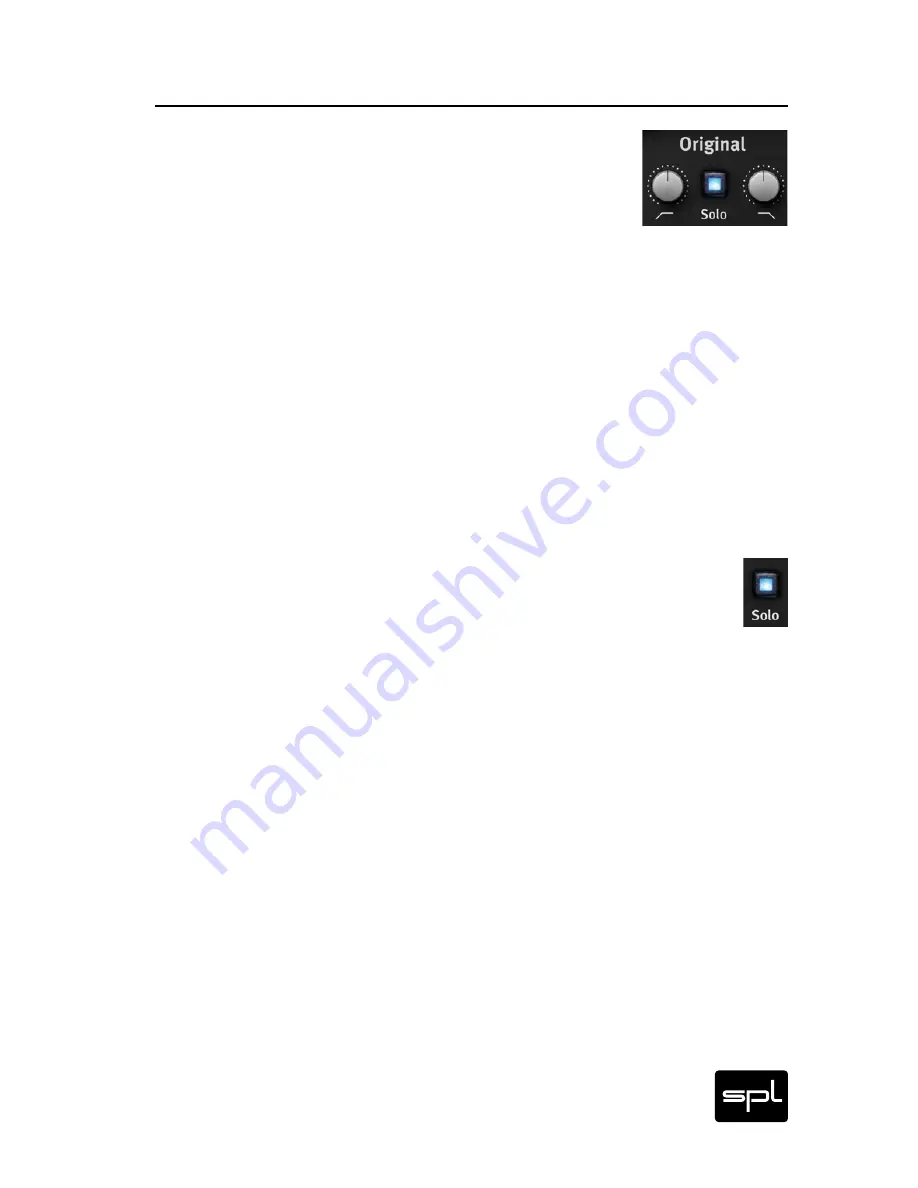
DrumXchanger Analog Code
®
Plug-in
15
ORIGINAL Module
Control Elements
ORIGINAL MODULE
High and low pass filters
The first controls are the high and low pass filters. A high pass
filter (HPF) only allows frequencies above a certain frequency to
pass through, while a low pass filter (LPF) only allows frequencies
below a certain frequency to pass through. These filters allow you
to cut the low or high end of the original signal to focus on a nar-
rower frequency range. Typical uses of these filters include the
filtering of rumble and low frequency interferences with an HPF,
and the suppression of hi-hat crosstalk with an LPF. These settings
have no influence whatsoever on the sound recognition or the trig-
ger module, nor do they affect the sound of the sample.
The high pass filter goes from 20 Hz to 11 kHz. The low pass filter
goes from 20 Hz to 22 kHz.
Solo
When you activate SOLO on the Original module you will listen only
to the original signal. This will allow you to concentrate on that
specific signal and make all necessary adjustments.
Do note that the DUCKING function works independently from the
SOLO button. To avoid any influence on solo listening, deactivate
the ON button next to the DUCKING control.
Transient Designer Processor
A transient can be defined as the first impulse of a waveform. What
the Transient Designer does is shape the waveform according to the
transient, and it only needs two controls to achieve that, either by
amplifying or attenuating the ATTACK and/or SUSTAIN. Processing
is not level dependent so it acts equally on all transients, regardless
of whether they are loud or soft. Among its most common uses are
the sound shaping of percussion instruments.
>
















































